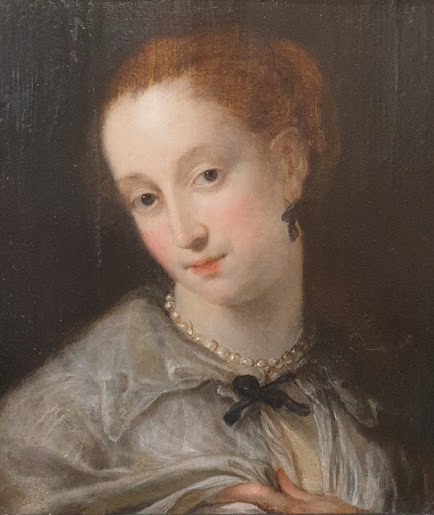Charmed Life
The Wellcome Collection exhibition programme is a fantastic conglomeration of art, science, history,and intrigue. The enticing slogan on the flags that flank the front entrance read 'Free for the incurably curious' and their exhibitions never fail to provoke curiosity and knowledge about topics that often centre around the every day, the way people live or have lived.
At the moment there are two simultaneous exhibitions, Miracles & Charms. The Miracles exhibition displays a huge collection of Mexican votive paintings. Paintings commissioned by everyday people giving thanks to patron saints for answering their prayers during times of need. These portrayals of sometimes tragic incidents give an optimistic insight into the power of prayer and belief.
The second exhibition, Charmed Life: The Solace of Objects, shows a more superstitious side to the same principle of investing hope and faith into something, be that a religion or a physical object. Artist Felicity Powell has explored the incredible collection of 1400 amulets amassed by Edwardian amateur folklorist Edward Lovett. These amulets and charms were once carried in Londoner's pockets for a whole range of reasons from protection and healing, to luck and love.
Using black backgrounds and soft white wax to create beautiful ghostly imagery, Felicity Powell's own artworks reflect the deep sense of dark magic and potency of Lovett's much-touched objects. These delicate dark wax paintings perfectly compliment the tiny amulets on display in their white horseshoe-shaped display case. One of the most interesting aspects of the Wellcome Collection's programme, and certainly the Charmed Life exhibition, is the ability to draw parallels between old and new and shed a new perspective on an almost forgotten part of social history. Miracles and Charms is on display until 26 February.
If you search Grays you can sometimes find charms and amulets in the dealers collections:
18th Century Amuletic Shark-tooth Pendant. From Rowan & Rowan at Grays.
"An early 18th century amulet pendant, a fossilised shark-tooth set in an engraved silver mount. Contemporary literature suggests that most of these teeth came from the Tertiary rocks of the Maltese Islands. The local populace called them 'serpent tongues' and believed the teeth were associated with the shipwreck of Saint Paul on their island. St. Paul was bitten by a serpent, blessed the island and cursed the viper. This purportedly rendered the local reptiles perpetually harmless. All courts in Europe used shark-teeth as amulets to detect poisoned food or drink and they were also believed to provide protection against the evil eye." - Michele Rowan.
15th Century Pilgrim Badge Pendant. From Rowan & Rowan at Grays.
"A silver fragment from a late 15th century pilgrim badge, later set to a high carat gold pendant mount. Medieval society was religious to an extent that is difficult for many of us to comprehend today and its depth of religious belief was manifested in the cult of the pilgrimage. Pilgrims travelled across the known world to visit the shrines of saints, seeking absolution of sin or miraculous cures for illnesses. To the medieval mind, the miraculous power of a shrine or relic could be transferred to anything that came into contact with it, giving rise the the first mass produced tourist souvenir, the pilgrim badge. Badges varied greatly in quality, some were crudely made while others were finely crafted.
This badge is of superior quality, silver rather than base metal and beautifully inscribed with a fragment of a Latin antiphon and prayer based on the doctrine of the Immaculate Conception." - Michele Rowan.
Charles 1st Gold Touch-piece. From Rowan & Rowan at Grays.
"Persons of royal blood were believed to have God-given powers of healing by touch, and the sovereigns of England, from the reign of Edward the Confessor to that of Queen Anne, used their 'powers' to cure sufferers of scrofula or Swine evil, a form of tuberculosis commonly known as 'King's Evil'. Charles 1st issued Angels almost exclusively as touch pieces, making intact specimens rare." - Michele Rowan.
Douveilliceras Ammonite. From Fossil Earth, Grays Mews.
Ammonite fossils have been used since the middle ages as powerful protective amulets against things like snakebites, fevers and eye problems.
Mid-Century Gold Pineapple Charm, c1950s. From The Antique Jewellery Company at Grays.
Pineapples are an old a symbol of hospitality. Being a luxury fruit, Pineapples were an extravagant treat for well to do families at dinner parties and special events. Visitors felt honoured by their host as pineapples on the menu showed that no expense was spared in entertaining the guests. The exotic fruit with it's distinctive shape came to symbolise high spirits, good cheer, warmth and affection.
On The Wellcome Collection's website you can watch a videoabout amulets in every day (modern) life. Click here to view.









.jpg)

Comments
Post a Comment